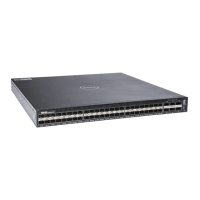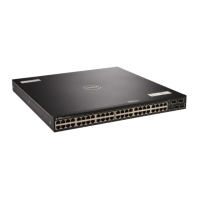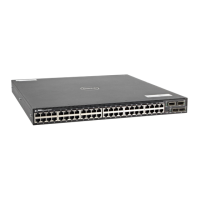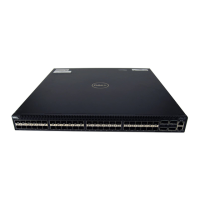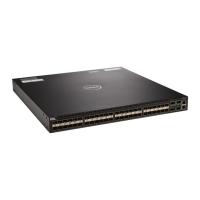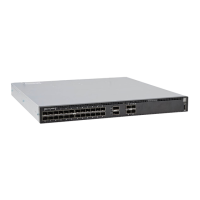• To use the method list.
CONFIGURATION mode
authorization exec methodlist
Specifying a RADIUS Server Host
When configuring a RADIUS server host, you can set different communication parameters, such as the UDP
port, the key password, the number of retries, and the timeout.
To specify a RADIUS server host and configure its communication parameters, use the following command.
• Enter the host name or IP address of the RADIUS server host.
CONFIGURATION mode
radius-server host {hostname | ip-address} [auth-port port-number] [retransmit
retries] [timeout seconds] [key [encryption-type] key]
Configure the optional communication parameters for the specific host:
• auth-port port-number: the range is from 0 to 65535. Enter a UDP port number. The default is
1812.
• retransmit retries: the range is from 0 to 100. Default is 3.
• timeout seconds: the range is from 0 to 1000. Default is 5 seconds.
• key [encryption-type] key: enter 0 for plain text or 7 for encrypted text, and a string for the
key. The key can be up to 42 characters long. This key must match the key configured on the
RADIUS server host.
If you do not configure these optional parameters, the global default values for all RADIUS host are
applied.
To specify multiple RADIUS server hosts, configure the radius-server host command multiple times. If
you configure multiple RADIUS server hosts, Dell Networking OS attempts to connect with them in the order
in which they were configured. When Dell Networking OS attempts to authenticate a user, the software
connects with the RADIUS server hosts one at a time, until a RADIUS server host responds with an accept or
reject response.
If you want to change an optional parameter setting for a specific host, use the radius-server host
command. To change the global communication settings to all RADIUS server hosts, refer to
Setting Global Communication Parameters for all RADIUS Server Hosts.
To view the RADIUS configuration, use the show running-config radius command in EXEC Privilege
mode.
To delete a RADIUS server host, use the no radius-server host {hostname | ip-address}
command.
Setting Global Communication Parameters for all RADIUS
Server Hosts
You can configure global communication parameters (auth-port, key, retransmit, and timeout
parameters) and specific host communication parameters on the same system.
However, if you configure both global and specific host parameters, the specific host parameters override the
global parameters for that RADIUS server host.
Security 918
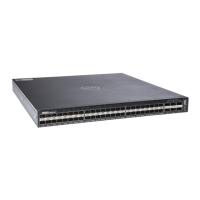
